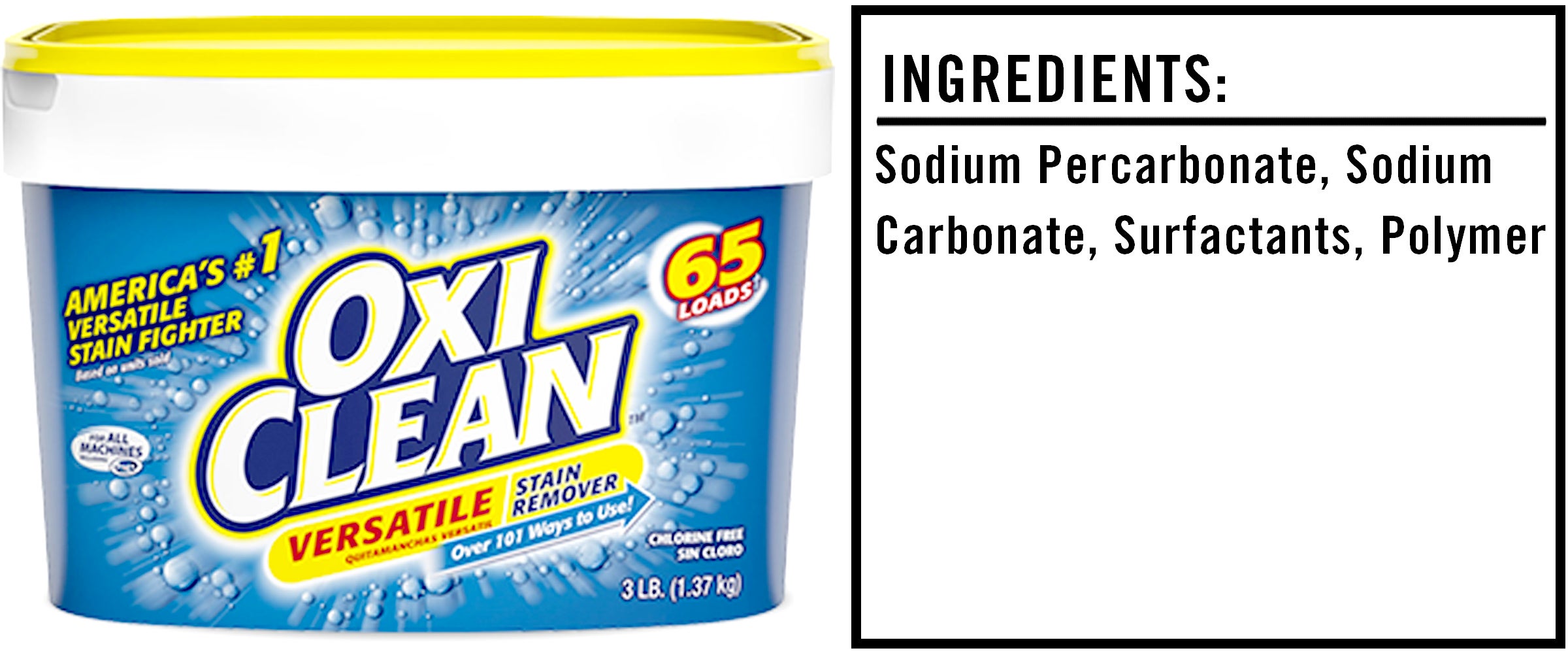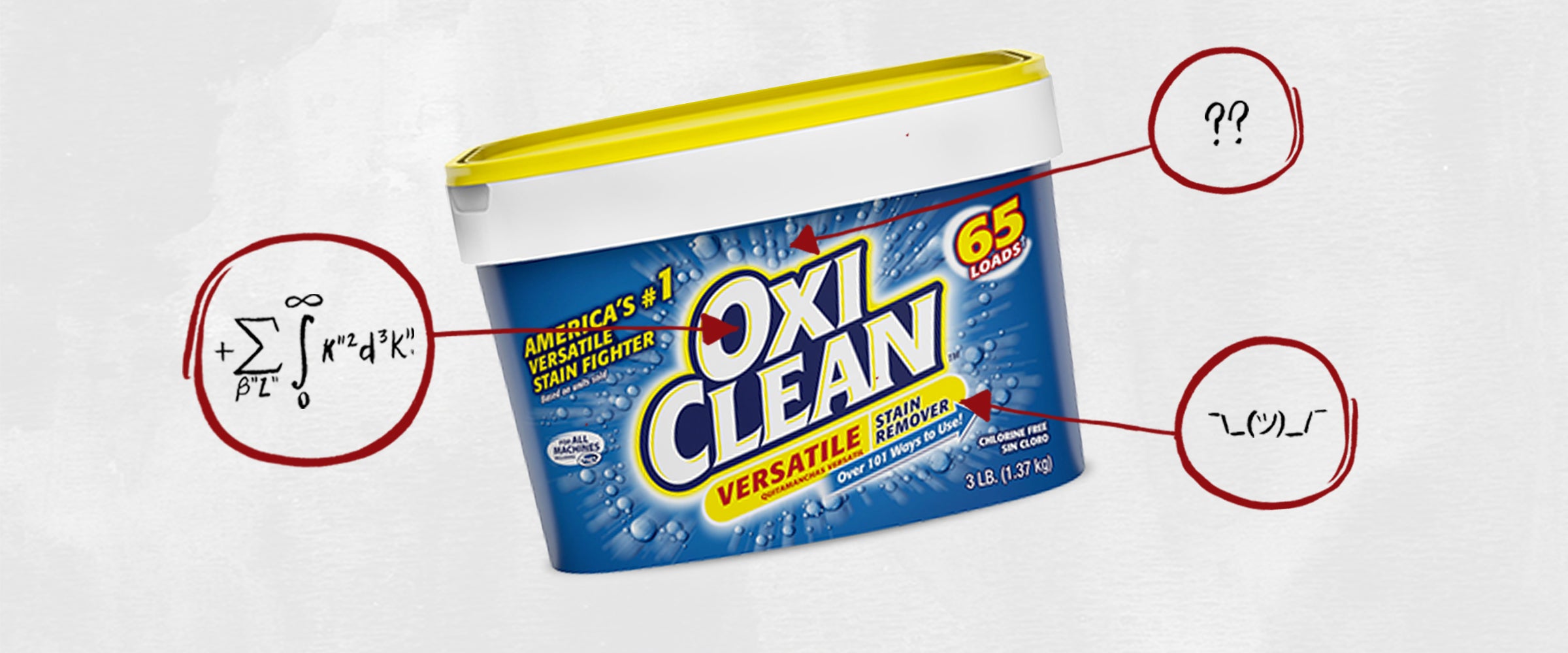We’re often told that you should never eat anything (or put anything on your body) if you don’t recognize everything on the ingredients list. But since most of us have no idea what xanthan gum or potassium benzoate are — or more importantly, what they’re doing to our bodies — we’re decoding the ingredients in the many things Americans put in (and on, or near) themselves.
This edition: OxiClean Versatile Stain Remover, which is made from four (or more) separate ingredients that we’ve broken down in the exact order they appear on their website. The full range of ingredients in OxiClean products is classified, because as we learned in our analysis of the ingredients in carpet cleaner, “since cleaning products are definitely not intended for ingestion — as seen during the Tide Pod craze of 2017 — the FDA often allows them on the market without much regulation, which usually means no public ingredients lists.” If you want to learn more about why that might be a bad thing (hint: less transparency usually means more dangerous ingredients), check out the piece at the link above.
We do know a few of the main ingredients in OxiClean, though, so let’s have a look at them before that stain of yours really settles in.

The Ingredients
1) Sodium Percarbonate: Sodium percarbonate is essentially a mixture of soda ash and hydrogen peroxide, and according to research by Laundry Alternative, OxiClean is made up of 50 to 60 percent sodium percarbonate. This ingredient is known as an oxygen bleach, hence the name OxiClean, and it works like this: First, when you mix OxiClean into your laundry, the soda ash “softens” the water, which helps other cleaning ingredients lift soils from the fabrics. Then, since hydrogen peroxide breaks down into oxygen when suspended in water, those oxygen bubbles, hissing and popping, help break the bonds between the fabric and the stain, essentially blasting the stain from the surface. This is why you can use oxygen bleaches on colored fabrics without ruining them.
Because oxygen bleaches like sodium percarbonate break down into nothing more than oxygen, water and soda ash, they’re considered to be far more environmentally friendly than chlorinated bleaches, and they’re great at breaking down organic stains — food, drinks, grass, dirt and bodily fluids — and killing bacteria. If you need to remove grease or some kind of synthetic stain, however, you might need to bring in some chlorinated bleach. But of course, chlorinated bleaches should only really be used on white clothes, unless you’re going for a tie-dye look.
2) Sodium Carbonate: Sodium carbonate is just another name for soda ash, and like we just explained, it boosts the pH of your laundry water, which helps stain molecules get rinsed away easily and can kill any lingering germs.
3) Surfactants: Surfactants reduce the surface tension between whatever’s causing your stain and the fabric that the stain is latched onto, so it can be easily rinsed away. Surfactants also just plain help clean your laundry. We can’t really say exactly what these surfactants are, since OxiClean doesn’t go into further detail, but keep in mind that most surfactants can irritate the eyes, skin and lungs if placed directly on the skin, consumed or breathed in. In other words, avoid doing anything with OxiClean other than cleaning.
4) Polymer: Polymers are chemical compounds with molecules bonded together in long, repeating chains, and again, we don’t really know what this polymer is. But chances are, it works as a stabilizing agent, keeping OxiClean fresh and working appropriately.
The Takeaway
Going by the ingredients we have at our disposal, OxiClean is a relatively safe and environmentally friendly way to remove stains. It essentially cleans by blasting stains with bubbles, which is wholesome as hell and seems to get the job done in many cases, unless you’ve been playing in oil and car sludge. It would be nice if we could see all the ingredients, though.

